Traditional banks face a competitive challenge as Fintech companies capture positions in the stablecoin market. The stablecoin market crossed the $200 billion mark for the first time ever in 2024, currently at $235 billion as of June 2025 – with projections suggesting the stablecoin market could reach $400 billion next year. While Fintechs have established early positions, this year represents an important opportunity for banks to use their regulatory advantages, infrastructure, and business relationships to compete effectively in the stablecoin market.
Fintechs Gained Early Market Share While Banks Waited
The competitive landscape shows the impact of banking’s careful approach to digital assets. Circle’s USD Coin (USDC) witnessed remarkable growth in 2024, with its circulation increasing by 78% year-over-year, while traditional banks remained mostly focused on pilot programs. Tether (USDT) has a market capitalization of approximately 116 billion US dollars, accounting for about 69.6% of the total stablecoin market despite ongoing transparency concerns that would be problematic for regulated financial institutions.
PayPal launched PYUSD in August 2023, and it has rapidly gained traction, with a market capitalization of $699 million, showing how consumer-focused platforms can scale digital asset capabilities. The company used its large user base to promote stablecoin usage, demonstrating how payment platforms can monetize digital asset features.
Fintech advantages include regulatory flexibility, with companies like Circle operating across multiple jurisdictions while banks worked through complex internal compliance processes. These players built blockchain-native systems from the ground up, avoiding legacy system integration challenges that have slowed traditional institutions.
However, Fintech weaknesses are becoming clear as the market develops. Regulatory oversight is increasing, capital requirements are growing, and business clients are demanding institutional-grade compliance that many Fintechs struggle to provide. These challenges create opportunities for banking’s response.
Banks Have Important Competitive Advantages in the Regulatory Era
The US Senate Banking Committee passed the Guiding and Establishing National Innovation for US Stablecoins Act of 2025 or “GENIUS Act,” which changes competitive dynamics in favor of traditional financial institutions. While Fintech face complex multi-regulatory approval processes, banks can use existing relationships with the OCC, FDIC, and Federal Reserve to speed market entry through established supervisory channels.
Regulatory compliance as a competitive strength represents banking’s main advantage. The GENIUS Act sets forth requirements for 1:1 backing with high-quality liquid assets, monthly public attestations, and segregated customer funds, which favor institutions with strong balance sheets and existing treasury operations. Fintech must build these capabilities from scratch while banks already have the infrastructure.
Business trust relationships provide banks with direct access to corporate treasury decision-makers that Fintechs cannot easily replicate. CFOs and treasurers have long-standing relationships with their banking partners, creating natural pathways for stablecoin adoption that bypass Fintech sales processes.
Capital advantages become important as the market scales. Banks can handle the operational costs of regulatory compliance while maintaining competitive pricing, whereas Fintechs must choose between profitability and market share. This dynamic will strengthen as regulatory requirements increase, and competition affects basic stablecoin services.
Infrastructure depth enables banks to offer complete solutions rather than single products. While Fintechs provide stablecoin issuance, banks can integrate these capabilities with existing commercial lending, trade finance, foreign exchange, and cash management services to create valuable, integrated client relationships.
Real World Examples
JPMorgan’s JPM Coin provides a model for how traditional banks can succeed in stablecoin markets. JPMorgan’s blockchain business has executed over $1.5 trillion of transactions such as intraday repos and cross-border payments since its inception in 2020, processing an average of more than $2 billion a day. JPMorgan Chase & Co.’s digital token JPM Coin currently handles about $1 billion daily and could be handling as much as $10 billion in daily transactions in the next year or two.
Cross-Border Payments
Cross-border payments represent the primary area where banks can effectively compete against Fintech competitors. Cross-border payments flows are projected to reach $290 trillion by 2030, and traditional correspondent banking relationships, regulatory expertise across multiple jurisdictions, and existing business client bases create natural advantages in this market.
- Cost advantages compound over time as banks spread regulatory compliance costs across larger transaction volumes. While Fintechs offer initially lower fees, banks can achieve better unit economics through operational scale and integrated service delivery that includes foreign exchange, trade finance, and working capital solutions.
Speed differentiation becomes less relevant as both banks and Fintechs achieve near-instant settlement through blockchain technology. However, banks can offer complete settlement solutions that include regulatory reporting, tax optimization, and risk management services that standalone Fintech platforms cannot provide. - Business integration favors banks with existing ERP system connections, treasury management platforms, and accounting software integrations. Corporate clients prefer unified solutions rather than managing multiple Fintech relationships for different aspects of cross-border payment processes.
Treasury Management
Corporate treasury integration represents banking’s strongest competitive position against Fintech players. Latin America and Sub-Saharan Africa are the fastest growing regions for retail and professional-sized stablecoin transfers, with year-over-year (YoY) growth exceeding 40%, but these businesses rely on banks for broader treasury management, creating natural expansion opportunities.
- Programmable Payment Capabilities
Programmable payments capabilities enable banks to offer sophisticated automation that goes beyond simple transaction processing. Automated internal transfers, conditional payments triggered by business events, and integrated cash management solutions create value propositions that standalone stablecoin providers cannot match. - Working Capital Optimization
Working capital optimization through stablecoin integration provides measurable ROI for corporate clients. Banks can offer complete solutions that include supply chain financing, automated receivables management, and optimized float management through blockchain-based settlement systems. - Risk Management
Banks’ can leverage existing frameworks for credit assessment, operational risk monitoring, and regulatory compliance. Corporate treasurers value integrated risk management over fragmented Fintech solutions that require separate oversight and control processes.
Conclusion
The stablecoin market is entering a decisive phase. Fintechs gained early market share by moving quickly, but regulatory oversight, capital requirements, and rising client expectations are shifting the advantage back to regulated institutions. JPMorgan’s success with JPM Coin shows how quickly a well-positioned institution can scale when it moves decisively. The next 12–18 months will decide whether banks reclaim this space or allow Fintechs to entrench themselves permanently. For banks, the choice is to act now, define the standards, capture high-value client relationships, and secure relevance in the digital asset era.
Ready to capture your share of the stablecoin market? Contact us at info@anaptyss.com



